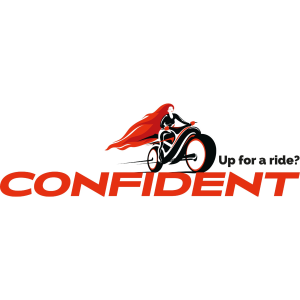”Contextual marketingul” is not some buzzword you drop in the conversation when negotiating budgets or company roles. It is an essetinal approach and a real need that has to be addressed if your company is to survive, says Ewelina Ciach, Senior Value Advisor, SAP Hybris. Ewelina's career includes companies such as Accenture, IBM and SAS, and within her current role within SAP she advises clients who wish to offer relevant and qualitative digital experiences to their own clients.
A statistic that Romanian marketers ought to take into account: 91% of marketers "consider for the next years improvements through customizing clients' experiences with the product or brand". Also, says Ewelina, the ones who really need to take note of these trends are advertisers and online publishers.
At ICEEfest, Ewelina Ciach aslso spoke about those few industries which are "immune to eCommerce". The title of the presentation was ”Influence Customer intentions in the era of extended experiences”, and in this interview she discusses the subject some more.
Pentru varianta in romana a acestui articol, un click aici.
Warsaw School of Economics
I took the opportunity to prepare and conduct Project Management lecture in Business Intelligence Postgraduate studies due to my practical experience in delivering complex implementation programs. I do really like sharing my experience and discussing solutions to issues and challenges people face with their own projects.
When I was finishing my masters at the best business school in Poland, the curriculum had little to do with practical business world. I was aware of that and I started working at my third grade and it paid off. I always encourage students to start they professional career as soon as possible.
Professional career
At Accenture I was delivering complex integration projects, mainly in the field of analytical CRMs at biggest banks and telecoms. I learned technology, architecture and Project Management and felt happy while doing advisory and business consulting. That’s why I wanted to try myself in software sales.
At IBM I was a customer engagement solution sales covering end to end sales cycle from business development, pre-sales to contract negotiation. At some point, I wanted to combine both roles: sales and PM.
So I joined SAS and was responsible for one of the top 3 biggest banking Clients. Together with the team we delivered complex transformation program for analytical CRM. I also took care of new contracts.
This year I was proposed by SAP to take over regional position as a team lead and currently am responsible for a business value advisory in the customer engagement strategic sales initiatives.
Some stats & tendencies in today's e-commerce
Main trends used to be personalization & contextualisation, omnichannel including mobile and marketplaces like Amazon, Alibaba and eBay. Currently we about to harness augmented commerce and simplification of interfaces to speech recognition ordering.
E-commerce has doubled volume of sales since 2012, 40% of all internet users have ever bought something in the internet (1 billion users) and the biggest adoption of eCommerce, where 2/3 of internet users buy more often online are travel products, event tickets and gaming related products.
There is still space for improvement. Businesses that automates the lead-management system see a revenue increase of 10 percent or greater in 6–9 months and savings of 15 percent on creative production.
The ICEEfest presentation: the era of extended experiences
In the era of add blockers there is no room for intrusive marketing. Whether you engage your audience with value added content and meaningful experiences or you will die. Both publishers and advertisers significantly suffer and struggle to adapt.
95% of companies are unable to make sense of customer data and struggle to act on real-time insights. What’s more nine in ten consumers say that personalization has impact on their purchasing decisions. The solution to this is to implement 7 stages of omnichannel Customer Engagement model.
From creating awareness, through driving Client’s discovery and interest, to make him/her consider and buy. Using product and/or service is the longest part of a Customer Journey and a time when we develop brand advocates. Every new interaction should be personalized and occur within the context of the last ones.
Contextual marketing
Contextualization increases Customer Experience and 55% of consumers are ready to pay more if their expectations are met. Whereas positive customer experience is a weapon in market competition, insufficient CX has twice bigger negative impact on revenue and share.
There is huge discrepancy between how marketers (66%) rate themselves (“very good” or “excellent”) and how consumers (only 31%) appreciate their efforts. 40% of clients perceive those companies as they “don’t deliver anything of interest”.
Luckily, the majority (91%) of marketers surveyed were prioritizing improving customer experience through personalization over the next years.
Even contextual, inbound marketing can generate overwhelming communication, which leads to opt outs and decreasing marketable customer base. The solution to this is complex event processing technology and business analytics which translates granular triggers into meaningful behavioral patterns.
We also need to take into consideration that user interest last around one week and their intents several days. This is crucial while retargeting Customer and not to make her/him annoyed with following ads.
Those immune industries
By immunity I mean industries where customers still buy more often offline than in online channels. Have you bought a beer online like we tend to order pizza? These days, we observe appearance of digital ordering services, which allow users to shop from local stores on a mobile device and order beer, wine, or liquor to be delivered straight to their home. Some even eliminate the liquor store entirely by shipping wine directly from wineries and other suppliers to consumers.
We all have quality and freshness concerns while grocery shopping. A solution to these may be using freshness labels that show how long a product stays fresh after it is delivered. Or by special service of creating shopping list and delivery of all needed products for particular meal or diet requirements.
Overcoming resistance to online buying made SPAR customers more loyal and, currently, data show that they spend ~50% of their grocery budget when shopping there.

























